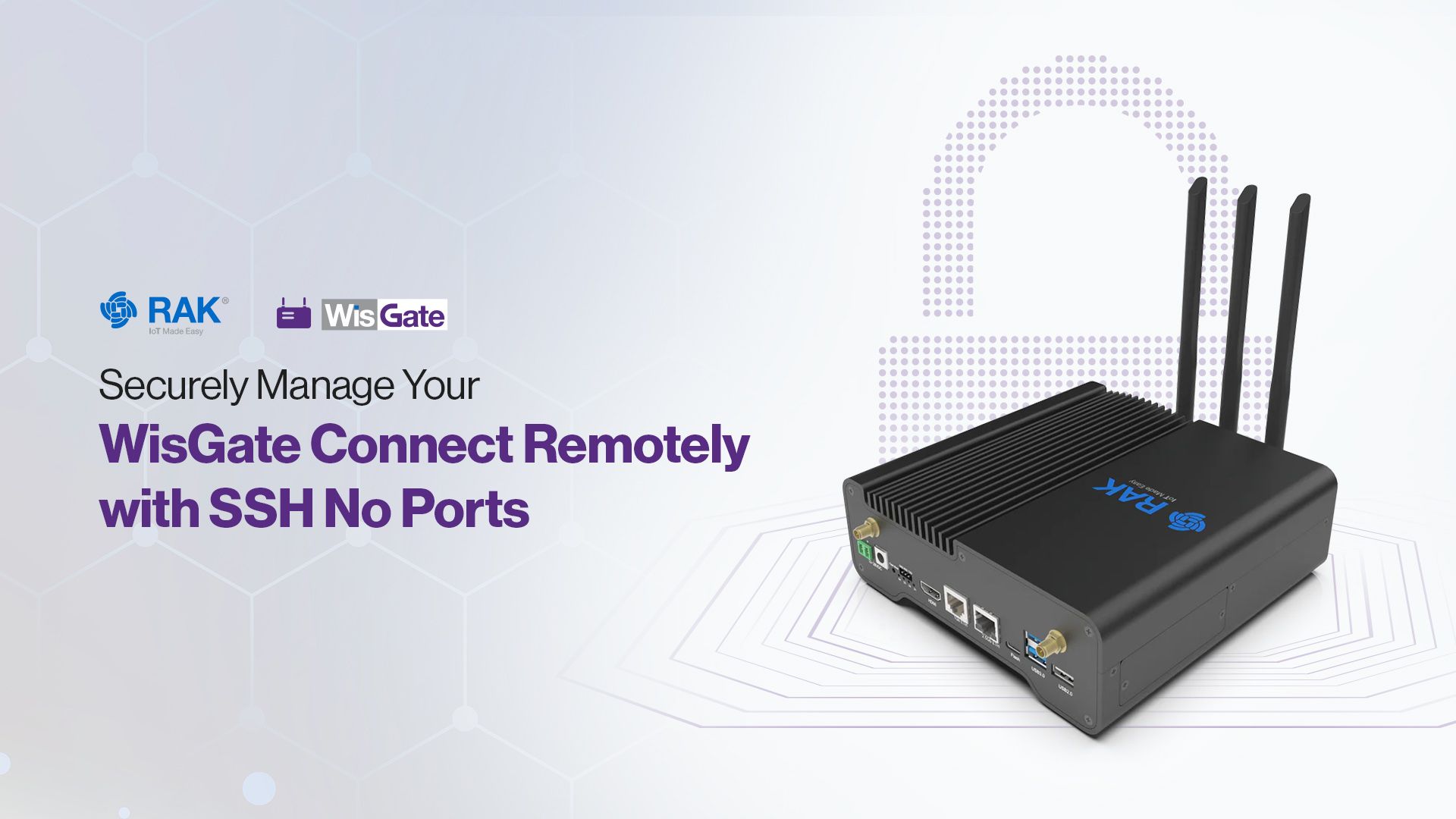Secure IoT Connections: P2P SSH On Windows (Free!)
Are you tired of leaving your digital front door wide open, exposing your precious IoT devices to potential cyber threats? It's time to lock them down! Connecting remote IoT devices securely has become not just important, but an absolute necessity in our hyper-connected world. This guide is your key to mastering P2P SSH connections for your remote IoT devices on Windows, ensuring top-notch security without emptying your wallet. We're diving deep into the tools and techniques you need, all available for free on Windows.
Imagine a world where you can effortlessly manage your scattered IoT devices without constantly worrying about security breaches or exorbitant software costs. This isn't some far-fetched dream; it's a tangible reality within your reach. By harnessing the power of the right tools and techniques, you can establish a robust and secure P2P SSH connection that safeguards your valuable data while keeping your budget intact. We're about to embark on a journey through the intricate realm of remote IoT connections, uncovering the best free SSH tools tailored for Windows and providing you with a comprehensive, step-by-step guide to setting them up. Whether you're a seasoned tech aficionado or simply an individual dedicated to securing your smart home devices, this guide is meticulously crafted to cater to your needs.
| Category | Information |
|---|---|
| Definition | Internet of Things (IoT): Network of physical devices with sensors, software, and connectivity for data exchange. |
| Security Importance | Prevent unauthorized access, data breaches, and maintain system integrity. |
| P2P SSH | Peer-to-Peer Secure Shell: Secure connection between two devices over the internet using encryption. |
| Benefits of P2P SSH | Direct connection, no central server reliance, encrypted data transfer. |
| Windows SSH Tools | PuTTY: Lightweight, easy to use, free SSH client. OpenSSH: Built into Windows 10+, customizable and advanced. |
| Real World Application | Managing smart home devices, monitoring industrial equipment, securing data transmissions. |
| Best Practices | Strong passwords, key-based authentication, limiting IP access, keeping software up to date. |
| Troubleshooting | Address connection refused errors, authentication failures, and firewall issues. |
| Additional Resources | SSH.com |
Before we dive headfirst into the intricate details of establishing your remote IoT connection, it's essential to take a moment to truly grasp the fundamental concepts of IoT and P2P SSH. IoT, or the Internet of Things, is essentially the vast network of physical devices meticulously equipped with sensors, software, and seamless connectivity, enabling them to effortlessly exchange data. On the other hand, P2P SSH, short for Peer-to-Peer Secure Shell, represents a highly secure methodology for forging a direct connection between two devices via the internet.
- Notti Osamas Tragic Death The Rising Rappers Story Legacy
- Exploring The Haley Nicole Nude Controversy Facts Amp Ethics
This method employs robust encryption to protect the data as it's transmitted between devices, thereby ensuring that even if an interception occurs, the information remains indecipherable to unauthorized parties. This characteristic renders it an exceptionally suitable choice for the remote management of IoT devices, where security is paramount.
IoT, in its essence, revolves around connecting "things"be it your intelligent refrigerator, your responsive thermostat, or your vigilant security camerato the vast expanse of the internet. These devices diligently gather and disseminate data, contributing to a more streamlined and efficient lifestyle. However, this heightened level of connectivity carries with it a significant responsibility: the imperative to secure these devices against unauthorized access and potential data breaches.
P2P SSH emerges as a highly secure means of establishing a direct connection between two devices without the necessity of relying on a central server. It employs sophisticated encryption techniques to safeguard the data exchanged between devices, ensuring that even in the event of interception, the information remains impervious to unauthorized interpretation. This makes it an exceptionally judicious option for the remote management of IoT deployments, where security is of utmost importance.
- David Rebecca Muirs Wedding Love Story Photos Revealed
- Filmyfly Your Gateway To Hollywood Bollywood Year
Now that you possess a foundational understanding of IoT and P2P SSH, let's delve into the critical significance of securing your remote IoT devices. Neglecting the security of your IoT devices is akin to leaving your front door unlocked throughout the day, rendering your network vulnerable to potential intrusion. Malicious actors can exploit vulnerabilities inherent in these devices to gain unauthorized access to your network, pilfer sensitive information, or even commandeer control of your devices.
- Safeguard your personal data from unauthorized access and potential breaches.
- Prevent unauthorized entities from gaining access to your invaluable IoT devices.
- Ensure the seamless and uninterrupted operation of your smart home or critical business systems.
When it comes to the task of establishing a P2P SSH connection on a Windows platform, the availability of the appropriate tools is of paramount importance. Fortunately, there exist a plethora of complimentary SSH clients that offer robust security features while maintaining user-friendliness. Let's take a moment to explore some of the most compelling options available:
PuTTY stands out as one of the most widely embraced SSH clients for Windows, and for good reason. It is remarkably lightweight, exceptionally easy to use, and entirely free of charge. With PuTTY at your disposal, you can effortlessly establish secure connections to your remote IoT devices in a matter of moments.
OpenSSH represents another outstanding choice for Windows users, seamlessly integrated into Windows 10 and subsequent versions, eliminating the need for any additional downloads. OpenSSH boasts an array of advanced features and offers extensive customization options, making it an exceptionally versatile choice for power users seeking granular control.
Now that you're equipped with knowledge of the appropriate SSH tools, let's embark on a step-by-step journey through the process of downloading and installing them on your Windows machine. For the purposes of this guide, we'll focus on PuTTY, owing to its ease of setup and intuitive user interface.
Navigate to the official PuTTY website and procure the latest version of the client. The installation process is remarkably straightforward; simply adhere to the on-screen instructions, and you'll have PuTTY up and running in no time.
Upon completion of the download, execute the installer and diligently follow the prompts. While you retain the option to opt for a custom installation to fine-tune specific settings, the default options are generally suitable for the vast majority of users, ensuring a hassle-free setup experience.
With your chosen SSH client successfully installed, the stage is now set to configure the P2P SSH connection. This intricate process encompasses configuring both the client and server aspects of the connection. Fear not, as we'll provide you with a comprehensive, step-by-step guide through each stage of the process.
On the target device to which you intend to connect (referred to as the server), the initial step involves installing an SSH server. For Windows-based systems, the recommended solution is OpenSSH Server, readily accessible within the Windows Features menu. Simply enable the OpenSSH Server feature, and you're ready to proceed.
Now, on your local machine (the client), launch PuTTY and meticulously enter the IP address of the server device. Select SSH as the connection type and subsequently click "Open." You'll be prompted to provide your login credentials, and upon successful authentication, you'll be seamlessly connected.
While P2P SSH inherently provides a secure method for connecting devices, there exist several supplementary measures you can implement to fortify the security posture of your connection:
- Employ robust passwords or implement key-based authentication for enhanced security.
- Restrict access to specific IP addresses to minimize potential vulnerabilities.
- Maintain your SSH software by promptly applying the latest security patches and updates.
Even with meticulous planning and execution, unforeseen issues can occasionally arise. Here's a compendium of common problems you might encounter during the configuration of a P2P SSH connection, accompanied by corresponding troubleshooting recommendations:
In the event of encountering a "connection refused" error, diligently verify the accuracy of the IP address and port number you're utilizing. Furthermore, ascertain that the SSH server is actively running on the remote device and that no firewalls are impeding the connection.
Should you experience difficulties logging in, meticulously ensure the correctness of your username and password. If you're utilizing key-based authentication, validate that the public key is accurately installed on the server.
Having gained proficiency in establishing secure connections to remote IoT devices via P2P SSH, let's explore several real-world applications of this invaluable technology:
- Effortlessly manage smart home devices from any location worldwide.
- Conduct comprehensive monitoring of industrial equipment situated in remote locations.
- Securely transmit data within the healthcare and financial sectors, adhering to stringent compliance requirements.
In this digital epoch, safeguarding your remote IoT devices has ascended to unprecedented levels of importance. By harnessing the power of P2P SSH and employing the appropriate tools, you can establish a secure connection that not only protects your valuable data but also ensures the seamless and efficient operation of your devices. Remember to adhere to established security best practices and consistently update your software to mitigate potential threats.
Your feedback is highly valued. Did you find this guide informative and helpful? Do you have any queries or insights to share? Please feel free to leave a comment below, and kindly consider sharing this article with your network of friends and colleagues. Together, we can collectively enhance the security landscape of the IoT ecosystem.
- Understanding the Basics of IoT and P2P SSH
- Why Securely Connect Remote IoT Devices?
- Choosing the Right SSH Tool for Windows
- Downloading and Installing SSH Tools on Windows
- Setting Up a P2P SSH Connection
- Tips for Securing Your P2P SSH Connection
- Common Issues and Troubleshooting
- Real-World Applications of Secure IoT Connections
- Conclusion: Take Control of Your IoT Security
- Aditi Mistry Nip Slip The Incident That Shocked The World
- Bollyflix Ninja Your Bollywood Movie Experience Starts Now

How To Securely Connect RemoteIoT P2P SSH Download Windows Free A

Securely Connect RemoteIoT P2P SSH Download Windows Free A

Securely Connect RemoteIoT P2P SSH Download Free A Comprehensive Guide